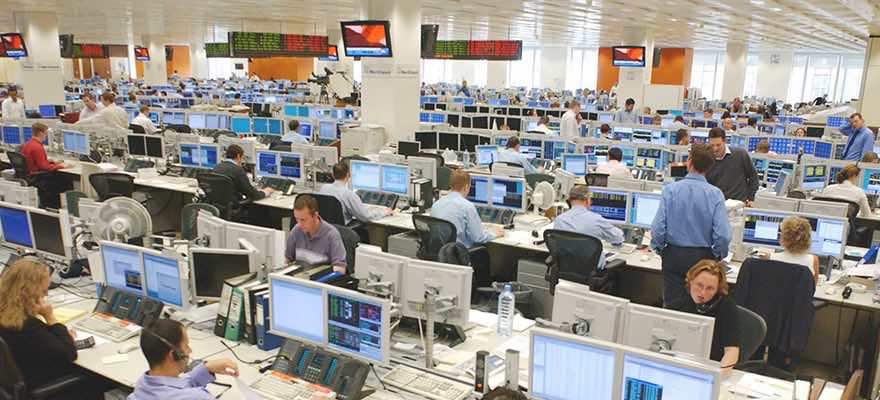In last week's post, I discussed the challenges brokers face when it comes down to their messaging. In today’s post, I want us to take a closer look at the copy we’re using to bring in new clients.
The London Summit 2017 is coming, get involved!
[gptAdvertisement]
DRMC, or Direct Response Marketing Copy, was touched upon in my last post too and Jeroen – one of the people who commented on the article – asked me to expand further. As promised, I will be covering DRMC and how you can get started on creating messaging that actually makes an impact.
The adage of quality over quantity wins every time
Quality messaging is the key to running any successful campaign. There, I’ve said it! Marketing, like life, doesn’t have to be hard, and the simple truth is that if you want your campaign to work, there are two chief ingredients you need to add into your mix.
The first is to make sure you understand the needs and wants of your potential clients, and the second is doing whatever it takes to get your messaging spot on. More doesn’t mean better. Better is better, and if that means getting your point across faster, go ahead and do it.
I learned a very important lesson - or should I say harsh truth – many years ago, and I want to share it with you. Your potential customers don’t care about you. They want to know what you can offer them. And they certainly don’t care how great you think you are. All they want to know is what you can give them. Got that? It’s about them. Not you.
Once you’ve learned that vital Jedi mind trick, you’re going to be well on your way to understanding DRMC and the secrets to unlocking more clients.
DRMC is a lot more fun than HMRC
None of us like to fill in our tax forms, but a lot of us do like our hand held when it comes to doing things, like having our tax forms filled in, hence the sub-title. The same can be said of Direct Response Marketing Copy. For starters, it’s direct. There’s no lingering with DRMC, but enough talk. It’s time for action, so let me give you a quick example of some DRMC. Before I do, I want to set the scene for what you’re about to read.
Here are two bits of copy. Both are targeting potential clients to register for a Forex
Forex
Foreign exchange or forex is the act of converting one nation’s currency into another nation’s currency (that possesses a different currency); for example, the converting of British Pounds into US Dollars, and vice versa. The exchange of currencies can be done over a physical counter, such as at a Bureau de Change, or over the internet via broker platforms, where currency speculation takes place, known as forex trading.The foreign exchange market, by its very nature, is the world’s largest tradi
Foreign exchange or forex is the act of converting one nation’s currency into another nation’s currency (that possesses a different currency); for example, the converting of British Pounds into US Dollars, and vice versa. The exchange of currencies can be done over a physical counter, such as at a Bureau de Change, or over the internet via broker platforms, where currency speculation takes place, known as forex trading.The foreign exchange market, by its very nature, is the world’s largest tradi
Read this Term webinar:
Want to learn how to trade forex like a seasoned professional?
We’ve created the perfect series of webinars that are geared to getting you to learn everything about Forex Trading
Forex Trading
Forex trading is the buying and selling of foreign currencies with the aim of generating a profit. The value of currencies, especially floating currencies, fluctuate to varying degrees. This constant volatility of exchange rates opens the door for speculators to invest in a certain currency against another. The Forex market is the world’s biggest and most liquid market, with over $5 billion turnover every single day, with the market being open 24 hours a day, 5 days a week.It goes without saying
Forex trading is the buying and selling of foreign currencies with the aim of generating a profit. The value of currencies, especially floating currencies, fluctuate to varying degrees. This constant volatility of exchange rates opens the door for speculators to invest in a certain currency against another. The Forex market is the world’s biggest and most liquid market, with over $5 billion turnover every single day, with the market being open 24 hours a day, 5 days a week.It goes without saying
Read this Term.
Our free webinars will introduce you to the world of forex and we are also going to expand on the terminology used by experienced traders.
You will be given everything you need to improve your knowledge of the markets as you are going to learn about pips, how to calculate leverage, and more!
Sign up for your free seat today!
Conversely, here’s the second piece:
Take Your Trading to the Next Level!
Go from “meh” to “awesome” with our
“Forex Transformation Webinar”!
Register your seat now and instantly gain the
“3 Secrets to being an Amazing Trader” eBook absolutely free!
Stop wasting your time watching the same boring webinars that teach and show you nothing.
If you’re feeling stuck, uninspired and frustrated with your current trading habits, stop what you’re doing right now. Stop wasting your time and let us show you what forex trading is all about.
Take Action Today!
Register My Seat Now!
Both pieces have 90 words. Both are about webinars. You tell me which one inspired you most. The first piece is okay in that it might bring in attendees. But it’s the standard approach. “Come and register your seat with us so that we can tell you what every other broker is telling you.” The second piece is the one that will bring in the gold. It’s super direct and offers value, and it’s those two words – “Direct” and “Value”, which are the linchpins of your copy. Without them, you won’t ever make the next level.
Some of you might be stewing right now because you’ve written copy like the second piece, but it’s never seen the light of day. I get how you’re feeling, so let me add the following, which is addressed to CEOs, CMOs and other gatekeepers… by allowing your heads of marketing and/ or copywriters to create unique, clever content, I promise you that you’ll leapfrog your competitors.
Do me a favour and try to spin the second piece. It’s super difficult, because the copy is so direct, to the point and contains no blah, blah, blah. Any attempt to spin it would be crystal clear to any reader who had seen the original. And you know what that’s great for? Your brand. DRMC gives you the power to set your brand apart, so why aren’t more brokers embracing it?
Same old got old
The sad fact is that the powers that be at the vast majority of brokers are completely and utterly unreceptive to DRMC - there are exceptions to that rule, but those exceptions take DRMC to an anti-compliance extreme, which is a definite no-go.
So where does that leave the industry’s copywriters? I’ll tell you. It leaves them with no option but to write the same old copy as every other broker. They may try to push the boundaries by upping the stakes and creating clever, intriguing DRMC-esque campaigns and content, but usually it will be a waste of time.
Why is it a waste of their time you ask ... Simply because, FX C-Levels usually have a vision of the brokerage business that’s not aligned in the slightest with what potential clients will respond to, and any content that strays from that vision will be vetoed. Tangible results or vague vision? I know which one I’d choose …
In last week's post, I discussed the challenges brokers face when it comes down to their messaging. In today’s post, I want us to take a closer look at the copy we’re using to bring in new clients.
The London Summit 2017 is coming, get involved!
[gptAdvertisement]
DRMC, or Direct Response Marketing Copy, was touched upon in my last post too and Jeroen – one of the people who commented on the article – asked me to expand further. As promised, I will be covering DRMC and how you can get started on creating messaging that actually makes an impact.
The adage of quality over quantity wins every time
Quality messaging is the key to running any successful campaign. There, I’ve said it! Marketing, like life, doesn’t have to be hard, and the simple truth is that if you want your campaign to work, there are two chief ingredients you need to add into your mix.
The first is to make sure you understand the needs and wants of your potential clients, and the second is doing whatever it takes to get your messaging spot on. More doesn’t mean better. Better is better, and if that means getting your point across faster, go ahead and do it.
I learned a very important lesson - or should I say harsh truth – many years ago, and I want to share it with you. Your potential customers don’t care about you. They want to know what you can offer them. And they certainly don’t care how great you think you are. All they want to know is what you can give them. Got that? It’s about them. Not you.
Once you’ve learned that vital Jedi mind trick, you’re going to be well on your way to understanding DRMC and the secrets to unlocking more clients.
DRMC is a lot more fun than HMRC
None of us like to fill in our tax forms, but a lot of us do like our hand held when it comes to doing things, like having our tax forms filled in, hence the sub-title. The same can be said of Direct Response Marketing Copy. For starters, it’s direct. There’s no lingering with DRMC, but enough talk. It’s time for action, so let me give you a quick example of some DRMC. Before I do, I want to set the scene for what you’re about to read.
Here are two bits of copy. Both are targeting potential clients to register for a Forex
Forex
Foreign exchange or forex is the act of converting one nation’s currency into another nation’s currency (that possesses a different currency); for example, the converting of British Pounds into US Dollars, and vice versa. The exchange of currencies can be done over a physical counter, such as at a Bureau de Change, or over the internet via broker platforms, where currency speculation takes place, known as forex trading.The foreign exchange market, by its very nature, is the world’s largest tradi
Foreign exchange or forex is the act of converting one nation’s currency into another nation’s currency (that possesses a different currency); for example, the converting of British Pounds into US Dollars, and vice versa. The exchange of currencies can be done over a physical counter, such as at a Bureau de Change, or over the internet via broker platforms, where currency speculation takes place, known as forex trading.The foreign exchange market, by its very nature, is the world’s largest tradi
Read this Term webinar:
Want to learn how to trade forex like a seasoned professional?
We’ve created the perfect series of webinars that are geared to getting you to learn everything about Forex Trading
Forex Trading
Forex trading is the buying and selling of foreign currencies with the aim of generating a profit. The value of currencies, especially floating currencies, fluctuate to varying degrees. This constant volatility of exchange rates opens the door for speculators to invest in a certain currency against another. The Forex market is the world’s biggest and most liquid market, with over $5 billion turnover every single day, with the market being open 24 hours a day, 5 days a week.It goes without saying
Forex trading is the buying and selling of foreign currencies with the aim of generating a profit. The value of currencies, especially floating currencies, fluctuate to varying degrees. This constant volatility of exchange rates opens the door for speculators to invest in a certain currency against another. The Forex market is the world’s biggest and most liquid market, with over $5 billion turnover every single day, with the market being open 24 hours a day, 5 days a week.It goes without saying
Read this Term.
Our free webinars will introduce you to the world of forex and we are also going to expand on the terminology used by experienced traders.
You will be given everything you need to improve your knowledge of the markets as you are going to learn about pips, how to calculate leverage, and more!
Sign up for your free seat today!
Conversely, here’s the second piece:
Take Your Trading to the Next Level!
Go from “meh” to “awesome” with our
“Forex Transformation Webinar”!
Register your seat now and instantly gain the
“3 Secrets to being an Amazing Trader” eBook absolutely free!
Stop wasting your time watching the same boring webinars that teach and show you nothing.
If you’re feeling stuck, uninspired and frustrated with your current trading habits, stop what you’re doing right now. Stop wasting your time and let us show you what forex trading is all about.
Take Action Today!
Register My Seat Now!
Both pieces have 90 words. Both are about webinars. You tell me which one inspired you most. The first piece is okay in that it might bring in attendees. But it’s the standard approach. “Come and register your seat with us so that we can tell you what every other broker is telling you.” The second piece is the one that will bring in the gold. It’s super direct and offers value, and it’s those two words – “Direct” and “Value”, which are the linchpins of your copy. Without them, you won’t ever make the next level.
Some of you might be stewing right now because you’ve written copy like the second piece, but it’s never seen the light of day. I get how you’re feeling, so let me add the following, which is addressed to CEOs, CMOs and other gatekeepers… by allowing your heads of marketing and/ or copywriters to create unique, clever content, I promise you that you’ll leapfrog your competitors.
Do me a favour and try to spin the second piece. It’s super difficult, because the copy is so direct, to the point and contains no blah, blah, blah. Any attempt to spin it would be crystal clear to any reader who had seen the original. And you know what that’s great for? Your brand. DRMC gives you the power to set your brand apart, so why aren’t more brokers embracing it?
Same old got old
The sad fact is that the powers that be at the vast majority of brokers are completely and utterly unreceptive to DRMC - there are exceptions to that rule, but those exceptions take DRMC to an anti-compliance extreme, which is a definite no-go.
So where does that leave the industry’s copywriters? I’ll tell you. It leaves them with no option but to write the same old copy as every other broker. They may try to push the boundaries by upping the stakes and creating clever, intriguing DRMC-esque campaigns and content, but usually it will be a waste of time.
Why is it a waste of their time you ask ... Simply because, FX C-Levels usually have a vision of the brokerage business that’s not aligned in the slightest with what potential clients will respond to, and any content that strays from that vision will be vetoed. Tangible results or vague vision? I know which one I’d choose …


















